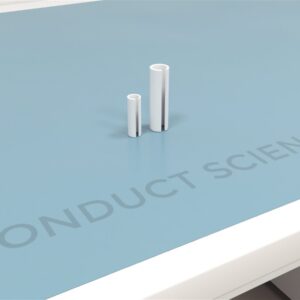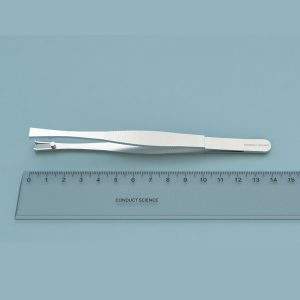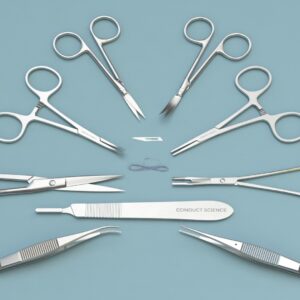$1,690.00
The Bumblebee Y maze, developed by Johannes Spaethe and colleagues in 2003, was designed to quantitatively investigate the link between eye optical quality and target detection ability in bumblebees (Bombus terrestris) across various sizes within the same species. The study demonstrated that larger bumblebees outperformed their smaller counterparts due to superior optical configurations, including larger facets and smaller interommatidial angles.
In the experiment, bumblebee colonies were connected to a flight cage using a Plexiglas tube, with shutters between the nest and the arena to control worker access.
The Y-maze consists of an entrance chamber and two tunnels extending from a central decision chamber, forming a Y shape.
Mazeengineers provides the Bumblebee Y maze, with options for custom coloring and other customizations upon request.

MazeEngineers offers custom-built behavioral mazes at no extra cost—designed to fit your exact research needs. Eliminate reproducibility issues from poor sizing or lingering scent cues with precision-engineered, modular, and smart mazes that adapt in real time to animal behavior. Publish new protocols, run adaptive experiments, and push the boundaries of behavioral science.



Features |
Height of entire maze: 0.3m |
Length of Flight cage: 0.45m |
Width of Flight cage: 0.45m |
Length of tunnels: 0.2m |
Width of tunnels: 0.3m |
Sides of trilateral decision chamber: 0.3m |
Base of trilateral decision chamber: 0.42m |
Length of plastic boards: 0.3m |
Width of plastic boards: 0.3m |
Central hole of plastic boards: 1cm ∅ |

Honeybees possess advanced sensory capacities and motor skills, enabling them to perceive their environment in diverse colors, shapes, and patterns. These sensory abilities significantly influence behaviors such as foraging, playing a crucial role in their survival. The Honeybee Y-maze offers a platform to explore these capabilities and examine related behaviors using a straightforward two-choice paradigm with different visual cues. Furthermore, honeybees exhibit sophisticated memory and the flexibility to adjust their preferences based on cues like temporal context (Zhang et al., 2006). This apparatus can be utilized to study learning behaviors and memory through various experimental protocols, such as reversal learning and discrimination learning.
The Honeybee Y-maze features a conventional Y design with a starting area that splits into two choice arms. An aperture in the start area allows the honeybee to enter the maze. The choice arms are equipped with placements for visual cues and a micropipette in the center of the wall to hold food rewards. Other tools used for evaluating cognitive and learning behaviors in honeybees include the Bumblebee Y-maze, the Bee Reward Expectations Apparatus, and the Bee Radial Arm.
The Honeybee Y-maze apparatus is constructed from acrylic and features a Y shape, consisting of a start area and two choice arms. The apparatus includes a UV-transparent Plexiglas ceiling. The start area measures 16.5 x 26.5 cm and is equipped with a sliding door. Opposite this sliding door is an entrance hole with a 5 cm diameter. This entrance hole leads to a decision area, which branches into two choice arms, each measuring 40 x 20 cm. The back wall of each arm, measuring 20 x 20 cm, is designed to hold a visual stimulus and includes a 6 mm micropipette at its center for dispensing food reinforcements.
Clean the device before and after usage. Observation and recording of the movements of the subjects can be done using a tracking device such as the Noldus EthoVision XT.
Train the subjects during the light cycle. Use fresh visual stimuli in all test performances to prevent influence by odor.
Place the visual cue pairs in the choice arms, ensuring that only one cue is positively reinforced with a reward, such as sucrose. Introduce a single bee into the start area and allow it to proceed to the decision area of the maze. If the bee chooses the rewarded pattern, let it consume the reward. If it selects the non-rewarded pattern, gently guide the bee away from the arm so it must re-enter the maze. To prevent the bee from learning based on positional cues, pseudo-randomize the position of the reward. Conduct 40 trials for each pair of visual stimuli. A bee is considered trained if it achieves 100% accuracy in two consecutive sessions. Additionally, the bee must demonstrate greater than 50% accuracy in five consecutive trial sessions to be considered fully trained.
After differential conditioning training, conduct extinction trials. Use pairs of non-adjacent stimuli that were not included in the training sessions. These pairings should enable the evaluation of the bee’s ability to discriminate between stimuli based on their differing or equivalent associative strengths, in line with the transitive inference principle. Conduct tests for 1 to 2 minutes without offering any rewards. Repeat the tests twice, alternating the sides of each stimulus between the tests. To maintain the bees’ motivation, perform four refreshment trials between each test, presenting each premise pair once.
Connect the cage to the Y-maze using a Plexiglas tube. Utilize pairs of stimuli different from those used in the training phase. Mark the foragers with colored spots on their thorax and abdomen. Allow the marked bee to fly into the maze’s entrance chamber, then close the sliding door to prevent other bees from entering. If the bee selects the incorrect arm, permit it to correct its choice without recording the error. After visiting the feeder, let the bee return to the cage. Begin the next trial when the bee starts a new foraging trip. Repeat the test twice.
Benard and Giurfa (2004) investigated transitive inference reasoning in free-flying honeybees, Apis mellifera L., using a Y-maze task with achromatic visual cue patterns arranged in associative strength (A > B > C > D > E). During discrimination trials, where only one cue in each pair was rewarded, bees successfully learned the four premises consecutively. However, analysis based on the acquisition curve showed that learning performance did not improve with each subsequent pair. When trial blocks were shortened to minimize recency effects, the bees struggled to discriminate the premise pairs.
After discriminative conditioning, the bees’ ability to distinguish between cues of equivalent or differing associative strengths was tested in extinction trials. Learning performance improved during refreshment trials, which also introduced recency effects into task performance. Across all experimental conditions, the bees did not exhibit transitive inference reasoning, as evidenced by their preference for the D visual cue over the B visual cue in extinction trials. However, when tested with pair A and E, the bees showed a strong preference for the A visual cue, likely due to a combination of recency effects and associative strengths.
Dyer, Spaethe, and Prack (2008) investigated the behavior of bumblebees (Bombus terrestris) and honeybees (Apis mellifera) in tasks involving discrimination and object detection using color stimuli as visual cues. The study used blue and green color stimuli. In the first experiment, six bumblebees were tested for their ability to discriminate a pointed star stimulus on a grey background using form vision. They were exposed to blue stimuli on the first day and yellow stimuli on the second day. Sucrose served as positive reinforcement, while quinine hemisulfate salt was used as negative reinforcement. The use of quinine hemisulfate as negative reinforcement led to improved decision-making among the bees.
The second experiment assessed the bees’ ability to differentiate between stimuli at a fixed angle in a Y-maze task. A third experiment evaluated the discrimination threshold of honeybees when visualizing stimuli at larger angles. The results indicated that despite having similar spectral sensitivities for detecting colored stimuli, bumblebees were significantly less proficient at discriminating between the colored choices. Both species, however, were able to discriminate between color stimuli at larger angles than initially expected.
The following data can be analyzed by using the Y-maze apparatus:
A decision is said to have been made when the subject crosses the dotted line.
The Honeybee Y-maze is designed to minimize stress for flying insects like honeybees, thanks to its simple and natural angles, making it a more suitable option compared to the T-maze, which features sharp, unnatural turns. The apparatus includes sliding doors to restrict access to other subjects during experiments and has a UV-transparent Plexiglas ceiling to provide natural daylight conditions for the bees.
It accommodates a variety of stimuli, such as achromatic or colored patterns, to study decision-making behavior. These stimuli can be detached and repositioned to prevent the bees from developing a consistent strategy to solve the task. Additionally, the apparatus features a micropipette container, allowing for easy placement of rewards without spillages.
Several factors can influence performance in the Honeybee Y-maze, including species, motor patterns, motivation to seek rewards, and the type of stimuli used. Chronic stress can reduce the subject’s motivation, negatively impacting their willingness to explore the maze. Utilizing achromatic patterns may lead to confusion and distress in the subjects, potentially resulting in inaccurate results. Additionally, improper handling of the sliding door could harm the bees if not closed carefully.
There are no questions yet. Be the first to ask a question about this product.